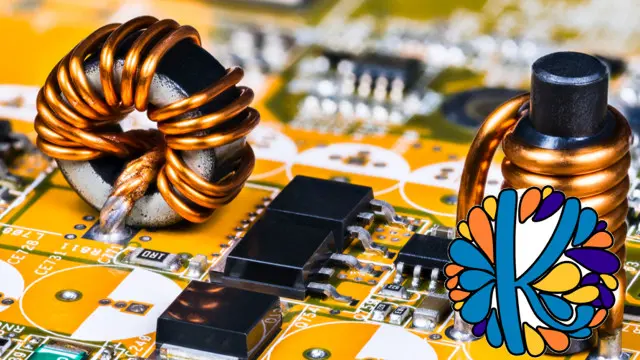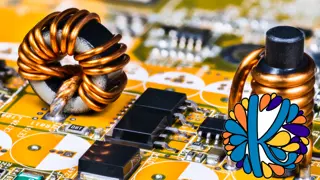
Ultimate Power Electronics and Electrical Protection Course
Learn about power electronics, electrical protection, and the PLC simulator (LogixPro) for electrical engineering
Khadija Academy
Summary
- Reed courses certificate of completion - Free
- Tutor is available to students
Add to basket or enquire
Overview
"Ultimate Power Electronics and Electrical Protection Course"
This magnificent 50-hour course will help you have a kick start in power electronics including rectifiers, AC choppers, DC choppers, and inverters. In addition to the basics of electrical protection such as overcurrent protection, differential protection, distance protection, circuit breakers, and fuses.
Certificates
Reed courses certificate of completion
Digital certificate - Included
Will be downloadable when all lectures have been completed
Curriculum
-
Course Content 37:17
-
Overview of the Power Electronics Devices 4:09:12
-
Half Wave Rectifier Circuits - AC/DC Converters 5:01:09
-
Full Wave Rectifier Circuits - AC/DC Converters 3:59:52
-
Three-Phase Rectifier Circuits - AC/DC Converters 6:17:10
-
AC Choppers - AC/AC Converters 3:08:29
-
DC Choppers - DC/DC Converters 3:40:15
-
Inverters - DC/AC Converters 2:50:11
-
MATLAB Simulations in Power Electronics 2:12:41
-
Basics of Electrical Protection 2:28:05
-
Overcurrent Protection 49:47
-
Distance Protection 2:32:45
-
Differential Protection 1:06:29
-
Circuit Breakers and Fuses 1:12:34
-
ETAP Course 4:43:04
-
LogixPro PLC Simulator Course 6:34:50
Course media
Description
Throughout the power electronics course, you will learn:
The applications of power electronics and the definition of a power electronic circuit.
Different types of switches such as diodes, thyristors, GTO, BJT, IGBT, Mosfet, etc.
The different AC/DC converters (rectifiers) such as half-wave and full-wave rectifier single-phase circuits in uncontrolled, half, and fully controlled bridges. In addition to the different three-phase rectifier circuits.
AC chopper circuits or AC/AC converters in the case of R load, L load, RL parallel, RL series load, and capacitive loads. In addition to the integral cycle control of an AC chopper.
DC choppers or DC/DC converters such as the step-down DC chopper with R and R-L-E load, and the step-up DC chopper with R, RL, and RE loads. Moreover, the buck, boost, and buck-boost regulator circuits.
Inverter or DC/AC converters including single-phase half-bridge R-load, single-phase half-bridge RL-load, single-phase bridge inverter R-load, single-phase bridge inverter RL-load, and the three-phase inverters. Furthermore, the single, multiple, and sinusoidal pulse width modulations.
You will learn also the simulation using the MATLAB Simulink program:
Single-phase half-wave controlled and bridge-controlled rectifiers.
Single-phase AC chopper with R and RL load
DC-DC converters such as buck, boost, and buck-boost regulators.
Single-phase half-bridge, bridge inverters, and three-phase inverters.
Throughout the electrical protection course, you will learn:
The different components of the electrical protection system, zones of protection, the trip circuit of the electrical system, the primary and backup protection, and the fault clearing time.
The different types of relays such as directional power relays, overcurrent relays, distance relays, plain impedance relays, directional impedance relays, modified impedance-type distance relays, reactance-type distance relays, Mho or admittance distance relays, and more.
The principle of operation and selection of low-voltage circuit breakers
The principle of operation of earth leakage circuit breaker or residual current CB
The selection of medium voltage circuit breakers
The types of low voltage and high voltage fuses
In addition to the LogixPro course:
This is the only course out there that can teach you the basics of PLC programming with fun and awesome simulations.
Logixpro program is an interesting and useful simulator for the simulation of different procedures such as moving belts, garage openings, and closing, a mixer that consists of a tank in addition to some pipes of different liquids, and many more!
This program helps learn ladder programming and PLC with an easy and interactive simulation method.
Take this bundle if you've been looking for ONE COURSE BUNDLE with in-depth insight into power electronics, electrical protection, ETAP, and PLC basics.
Who is this course for?
- Anyone who is interested in understanding power electronics.
- This bundle is designed for complete beginners with zero knowledge of power electronics.
- Electrical engineers who want to learn about power electronics.
- Students who want to learn about power electronics.
- Anyone who wants to know about different converters and how rectifiers work in power electronics.
- Beginner course for electrical engineering students and for those who want to gain knowledge about AC Choppers in power electronics.
- Electrical engineers and electrical power engineering students who want to learn about DC choppers in power electronics.
- Electrical engineers or electrical power electronics students who want to learn more about inverters in power electronics.
- Anyone who wants to learn about electrical protection.
- Anyone who wants to learn about the LogixPro simulator that helps in learning about PLC.
Requirements
Basics of electric circuits.
Passion to learn!
Questions and answers
Currently there are no Q&As for this course. Be the first to ask a question.
Reviews
Currently there are no reviews for this course. Be the first to leave a review.
Legal information
This course is advertised on reed.co.uk by the Course Provider, whose terms and conditions apply. Purchases are made directly from the Course Provider, and as such, content and materials are supplied by the Course Provider directly. Reed is acting as agent and not reseller in relation to this course. Reed's only responsibility is to facilitate your payment for the course. It is your responsibility to review and agree to the Course Provider's terms and conditions and satisfy yourself as to the suitability of the course you intend to purchase. Reed will not have any responsibility for the content of the course and/or associated materials.


